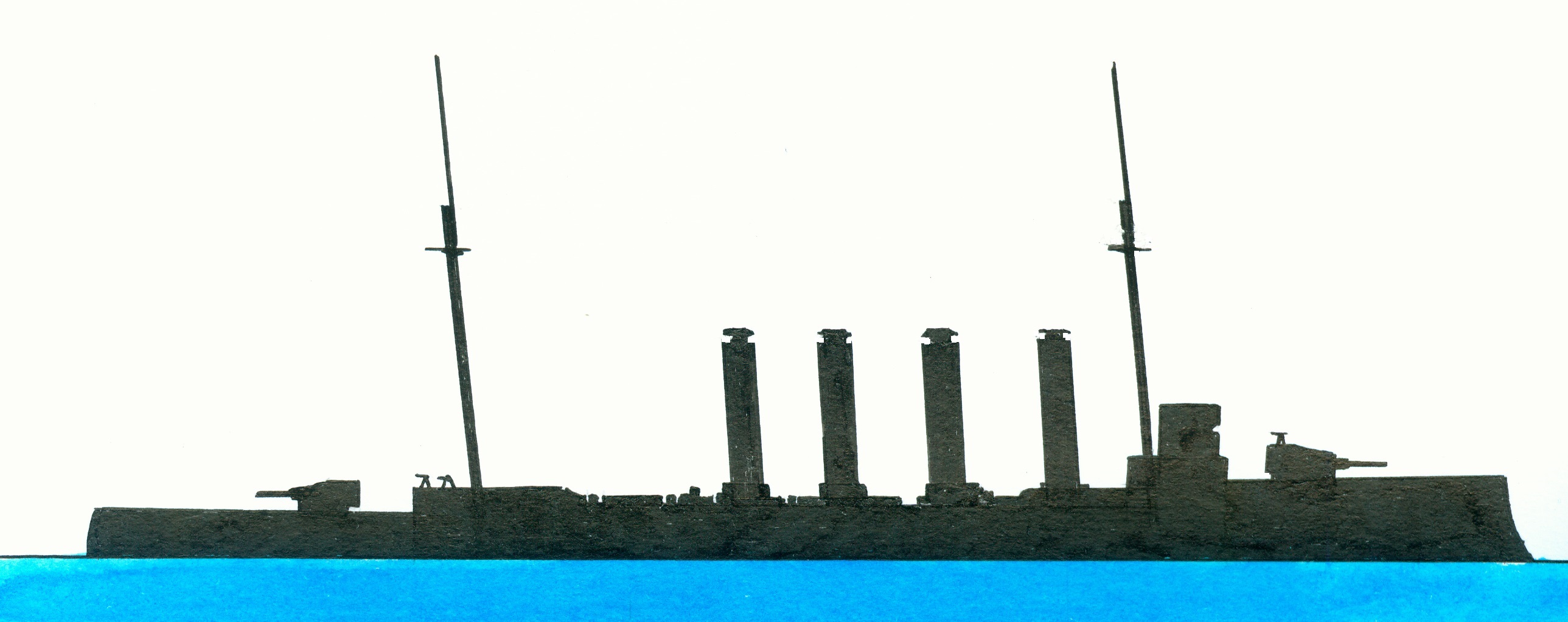Devonshire-class
Duke of Edinburgh-class
Warrior-class
General technical specifications. With a displacement of 12.790 tons/12.590 long tons-13.770 tons/13.500 long tons (design) were the dimensions 146,3 (between perpendiculars)|-154,08 (over all) x 222,4 x 9,1 (fore)-8,4 (aft) x 9,1 (metacentric height) metres or 480-506.6 x 73.6 x 26.6-27.6 x 4.2 feet. The 2 shafts 2-4 cylinder vertical triple expansion steam engines and 26 boilers supplied 23.000 ihp allowing a speed of 23 knots or with a speed of 10 knots a range of 8.130 nautical miles. The crew numbered 769 men. The armament consisted of 6x1-23,4cm/9.2” breech loading Mk X guns, 10x1-15,2cm/6” breech loading Mk XI guns (in 1017+2), 20x1-4,7cm/3pd quick firing Vickers guns and 3-45cm/18” submerged torpedo tubes, for which 18 torpedoes were carried with them. The Krupp cemented armour consisted of a 7,6cm3” (end)-10,2cm/4” (between central citadel and bow)- 15,2cm/6” over a length of 79,2m/260 feet of the hull amidships with a height of 4,42metres/14.6”feet above and 1,47 metres/4.10 feet below the waterline. The citadel was protected by 6” thick transverse bulkheads and further more was a 1,9cm/0.75” thick deck although the steering gear and engine cylinders were better protected with 3,8cm/1.5”and5,1cm/2”. The gun turrets, barbettes and conning tower were protected by respectively 5.5” (sides)-2” (roof)-7.5” (faces, 6” and 25,4cm/10” (sides).
Note
1. Philip Watts (30 May 1846 Depford, Kent, England-15 March 1926, Chelsea, London, England).



